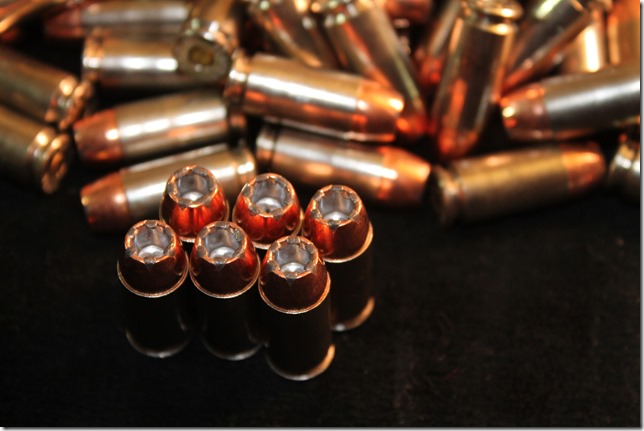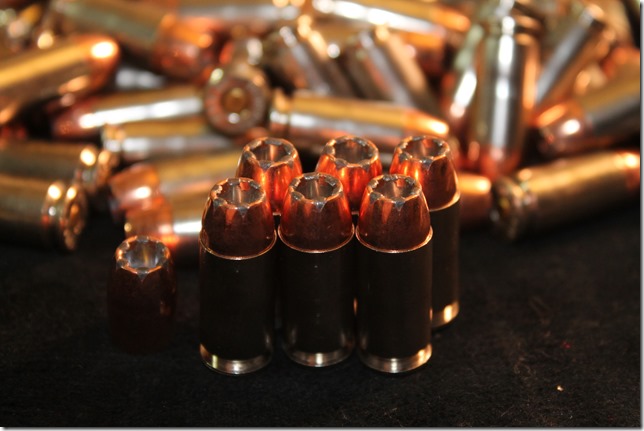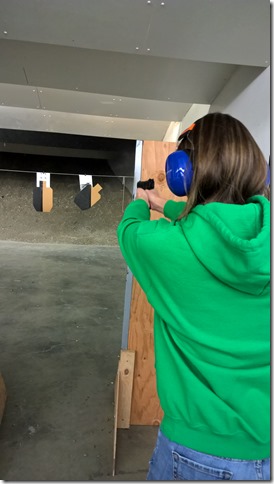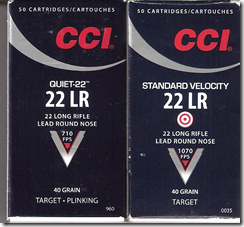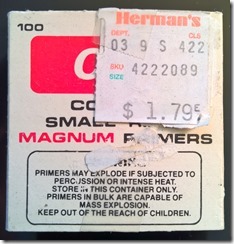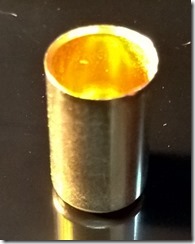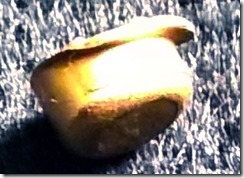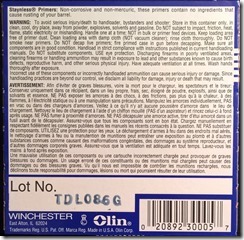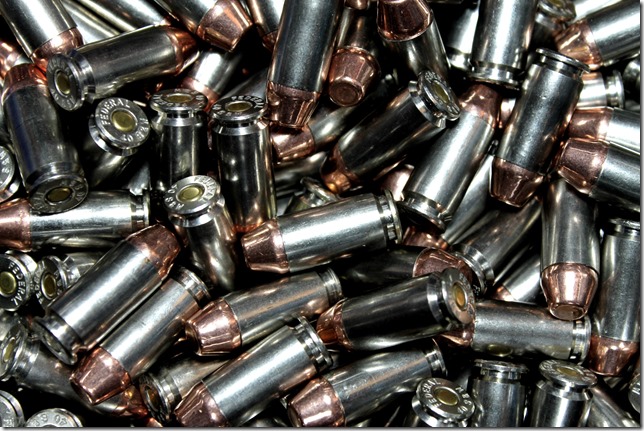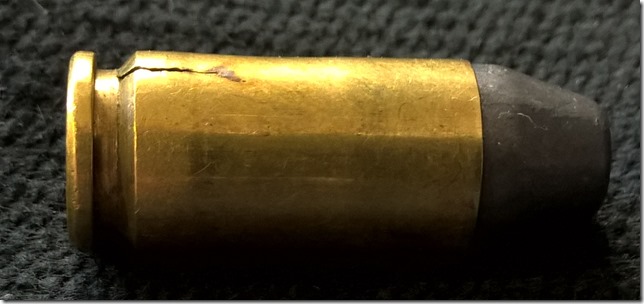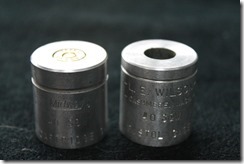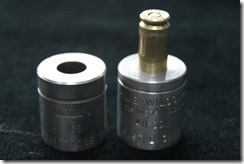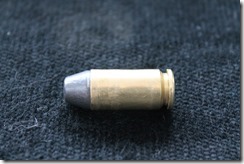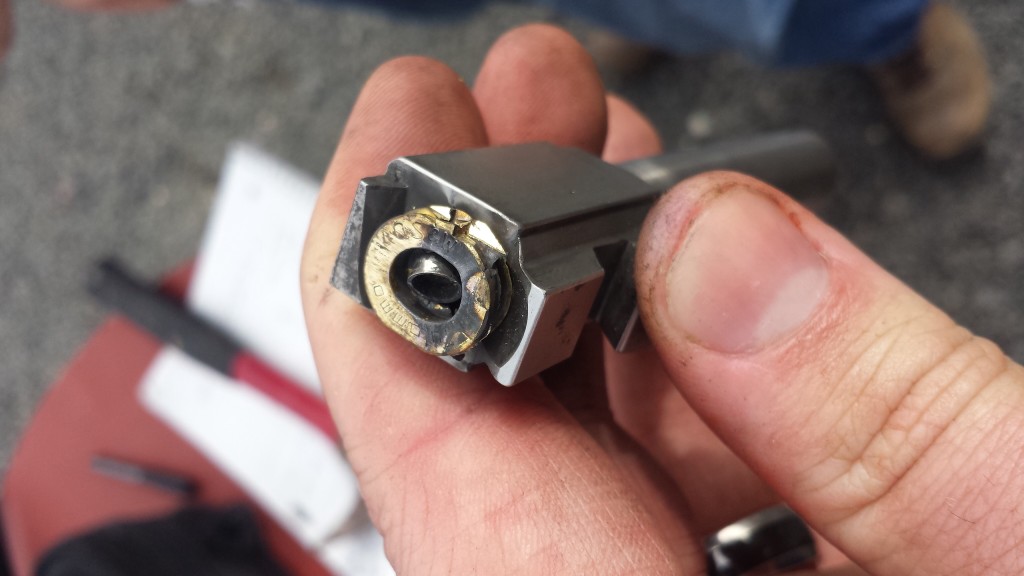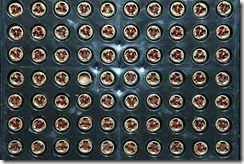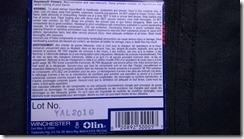The January/February 2015 issue of Front Sight magazine has an interesting article on the statistics of making “power factor*”.
While I certainly had the background in statistics it never occurred to me to apply them to the chronograph data from my hand loaded ammunition to determine the chances of me failing to “make major” at a match. This is despite very nearly failing to make major in the 1998 Area One USPSA match.
Looking at my log files for the ammunition I made for that match I found the following data:
Mean velocity: 992.6 fps
Standard Deviation: 11.3 fps
Bullet Mass: 180 grains
Power Factor: 178.67
Back then you had to have a power factor of 175 to make major and for some reason I thought I had plenty of margin.
At the 1998 Area One match staff pulled eight cartridges at random from the magazines on my belt and tested them as per USPSA regulations. They pulled the bullet from a cartridge and weighed it. They fired three rounds and found I failed to make major. They, as per procedure, fired another three rounds, used the highest three velocities from the six rounds fired and found I was closer but still failed. They had one round left and, as per procedure, asked me what to do with it, “Fire it or weight the bullet?” I had them fire it and using the highest three velocities from the seven rounds fired I just barely made major power factor.
It wasn’t until I read the title of the article in Front Sight article, “The Power of Statistics How to Meet Power Factor with Confidence” that I felt stupid for my experience at Area One.
The bottom line is that your chance of failing the test procedure depends on how many standard deviations you are away from the velocity threshold for the power factor you want to meet.
Using my example from the Area One match the velocity threshold is 972.22 fps (175,000 / 180). My mean velocity was 992.6 fps or 20.378 fps above the threshold. With a standard deviation of 11.3 fps the ammo was 20.378 / 11.3 or 1.8 standard deviations (commonly called ‘Z’) from the threshold. Using a normal distribution table or the article you will discover my chances of failing were about 13%.
Update:
Using this table from the article you will discover my chances of failing were about 13%:
| Z |
Chance of Failing Power Factor (per USPSA rules) |
| 2.5 |
5% |
| 2.0 |
10% |
| 1.9 |
11% |
| 1.8 |
13% |
| 1.7 |
15% |
| 1.5 |
21% |
| 1.4 |
26% |
| 1.2 |
36% |
| 1.1 |
40% |
| 1.0 |
44% |
| 0 |
50% |
This table is not a standard distribution table. It is a mapping from Z (number of standard deviations away from the mean) to the chances of failing the PF test under USPSA rules. This was obtained using a t-distribution because of the small sample size used by the USPSA regulations. It is assumed the shooter obtained the mean velocity and standard deviation with a sample size of eight.
End update.
I’m going to range today to measure the velocities of a new load I plan to use for competition. I’m going to make sure I’m about 2.5 standard deviations away from the threshold which would put my odds of failing to make major at about 5%.
* Power Factor is defined as the mass of the bullet in grains multiplied by the velocity in feet per second divided by 1000. Or:
Power Factor = bullet weight (grains) x average velocity (feet per second) / 1000
In many competitions your targets are scored differently depending on the power factor of the ammunition you are shooting. For example if you are shooting Limited Class USPSA you “make major” with a power factor of 165 or greater and “make minor with a power factor of 125. For major power factor ‘B’ and ‘C’ zones hit are scored as 4 points and ‘D’ zone hits are scored as two points. If you “make minor ‘B’ and ‘C’ zones hit are scored as three points and ‘D’ zone hits are scored as one point. If you don’t have ammunition which gives you a power factor of 125 or greater all zones are scored as zero. I.E. you aren’t participating in the competition.
Like this:
Like Loading...

